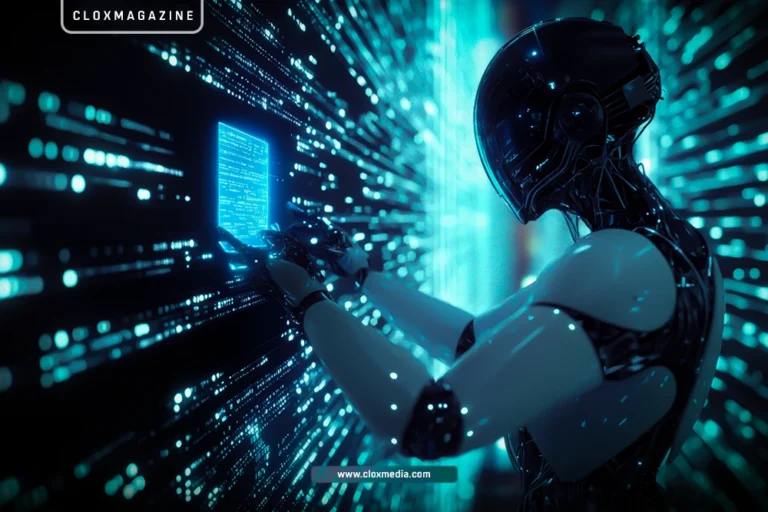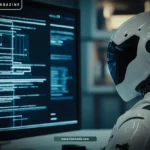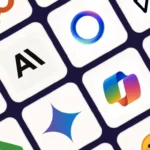Artificial Intelligence (AI) has transitioned from being a dream to a big influence in almost every facet of our world. There are indeed some bright spots, but there is more to the use of AI, and those are the reasons why this paper deems it to be worth exploring. These secrets do not only help us in understanding the existing technological capabilities of AI but also assist us in comprehending where the technology could be headed towards. Therefore, let’s try to address these issues here and ask why AI is such a new reality – and explain the reasons for believing in its rapid development.
NOTE: This is an official Research Document by “CLOXLABS”
— AI Is Similar to One’s Brain. Just More Efficient
In addition to offering a robotic aids in performing repetitive tasks, one of the least talked about and most startling characteristics of artificial intelligence is its ability to revolutionize e-learning. Machine learning, which is a function of artificial intelligence, works with algorithms embedded in other smart systems to enable the systems to acquire knowledge. That is the goal: to simulate human behavior as a function of experience. Neural networks for example are artificial networks that are meant to copy the different brain regions by matting “neurons” together into different layers that sequentially process information. The difference? Man has to go through years of schooling and life before they are capable of processing and storing this much information; unlike in the case of AI, which can only take minutes to absorb and understand that information because it has been customized for that purpose.
All Ads on this website are served by GOOGLE
— The Role of Unsupervised Learning: AI Grows in Silence
Usually, there comes a moment in discussions about different AI systems when people speak about how these systems are trained on labeled data. That is the data sets that human brings to the machine with clear instructions. However, one of the forms of learning that is less publicized, and probably more effective is called unsupervised learning. AI does not involve any of these human-in-the-loop annotations. Rather, it processes the data and self-discovers the patterns that are present in the data sets. This method is very important in making it possible for AI systems to grow on their own and make innovations which were even not foreseen by their human makers.
For illustration, we can draw on an example of several instances where the Google company’s AI system developed its own cryptographic methods without being explicitly told to do so. This is the way AI’s creativity manifests itself outside consciousness in the context of artificial systems. This kind of learning will pave the way for more advanced, self iterative AI systems in the future.

All Ads on this website are served by GOOGLE
— The Data Behind AI:
More Than You Realize A Third Secret of AI
Whatever the purpose may be, there’s one more secret to AI that is more than worthy to be classified a necessity – tons and tons of information. Everyone knows that AI is very data dependent. More data means more accuracy and usefulness. And companies like Google, Facebook, or Amazon have a huge amount of information on the population’s shopping preferences and behavior and can derive highly accurate predictions from their AI. Still, most will probably underestimate how great these data sets actually are. Every search you make, every product you buy, every post you like, is a contributing factor to a system that continues to learn, engage and hypothesize.
This over reliance on data comes with hesitation when it comes to data privacy concerns and data protection measures, however, it also brings unique aspects of how people behave. Repercussions about social implications of providing data would entail that in centuries to come there will be no features that will be complex and difficult for AI. It will be able to foresee trending topics, diagnose disease, and even predict social revolutions.
— AI’s Creative Side: From Art to Innovation
In one light, the most stunning feature of AI is its creative aspect. As a phenomenon that many scientists used to take for a specifically human phenomenon and which computers would never have, creativity has been transformed by AI. Today’s AI can music, paint abstract pictures and even concentrate to create entire stories in the format of poems. Such outputs are not just mechanical reproductions and certainly not peripherals; AI learns people’s ways of doing things and reproduces proclaims new creation.
Participate in the creation of works of art by artificial intelligence. For that purpose, platforms such as DALL·E and MidJourney incorporate numerous complex algorithms for creating detailed works of art from text descriptions. Looking ahead, the future will probably be in a situation where there are AI systems that will collaborate with humanity in the writing of books and the production of movies and innovating new art that gives more than what is currently possible.

— AI Ethics and Bias: The Double-Edged Sword
Another hidden truth within the scope of the world of AI is the fact that the systems themselves have embedded bias. The efficacy of the AI systems is a function of the data that is fed into the systems. If they have that type of data, then they will go the way of the data, which is biased. This concern has been highlighted in various ways, including in several prominent instances of AI systems that displayed racist and sexual biases unwittingly. For example, it has been discovered that facial recognition systems are often unable to discern the physical features of people of color and other unreasonable assumptions which raise questions of fairness in the society.
Elimination of these biases is one of the goals of many researchers. The fact of the matter is that the AI has the warts and flaws of the society, which has made it. In the absence of provision of the appropriate guidelines and a variance of datasets, AI systems are likely to reinforce the existing social injustices.
— The Singularity: AI’s Ultimate Destination?
The singularity is one of the most intriguing mysteries regarding AI development where one of the milestones in the development of the intelligent machine will happen — the point in time after which there will be no distinction between humans and machines, and AI will continuously get better on its own on an accelerating scale. This maxim was effectively shared by many futurists and particularly, Ray Kurzweil, who points to possibilities that AI can potentially bring societal transformations, down the road exceeding all expectations and continue enhancing tools which enhance life even further.
And even though this remains simply a projection, as it is very exciting to theorize long-term scenarios, there is still a building concern about increasing capability of AI that makes the subject examinable. If such a singularity is creating, then society is likely going to have to entertain some very troubling questions, regarding humanity’s place in the world and even superintelligent systems.
Mo Gawdat answers to a common question in ai field: Are we prepared for the implications of AI surpassing human intelligence?
He also mentioned that “The Future is Here, and There’s No Stopping AI” ⬇⬇⬇
Check out Mo Gawdat’s latest book about The Future of AI and How You Can Save Our World:
Purchase from Amazon: https://amzn.to/403XHl1
— AI’s Future in Medicine, Environment and Space
However, in truth, the challenge can be argued that the possibilities of AI do not seem to have fully been exploited. As soon as tomorrow, an AI is foreseen to implement changes in medicine, environmental science or even in space research ideas. AI systems are already being utilized in disease diagnosis, creating treatment regimens for patients and predicting treatment in patients with great accuracy. Very soon, artificial intelligence may be engaged in surgery with the physicians in physical presence of the patient or keeping track of patients real time and bringing them to their course of therapy through use of electronic devices.
AI technologies further improve efficiency of environmental research by doing the research itself and terraforming monitoring through data analysis of the human activity that fuels climate change including carbon emissions, deforestation and weather changes. This technology is also used for wildlife protection activities for example identifying rare species and hunting those who illegally poach them.
As for the sphere of space exploration, it is in this domain where AI will be integral in handling the several challenges posed by space travel which include directing the ship systems and even the implanting of the personnel in other worlds. The scope of techniques is actually unlimited.
About the Author:
Amir Ghaffary – CEO of CLOXMEDIA – is on a relentless mission to revolutionize our grasp of the future, blending visionary insight with cutting-edge technology to craft a new paradigm of modern understanding. His work transcends traditional boundaries, bridging the gap between what is and what could be, inspiring a generation to rethink the possibilities of tomorrow. By advocating for a deeper integration of AI, digital transformation, and forward-thinking innovation, Amir is not just predicting the future—he’s actively shaping it, pushing society to embrace a bold new reality where technology and human potential are intertwined like never before.

All Ads on this website are served by GOOGLE








